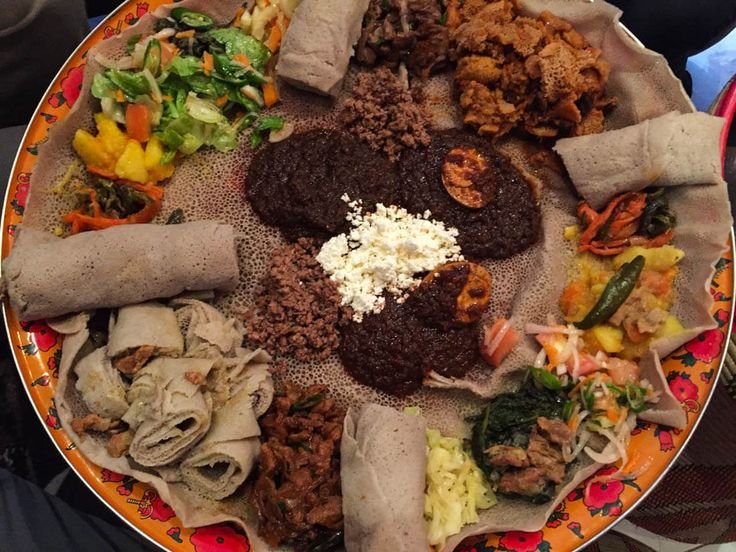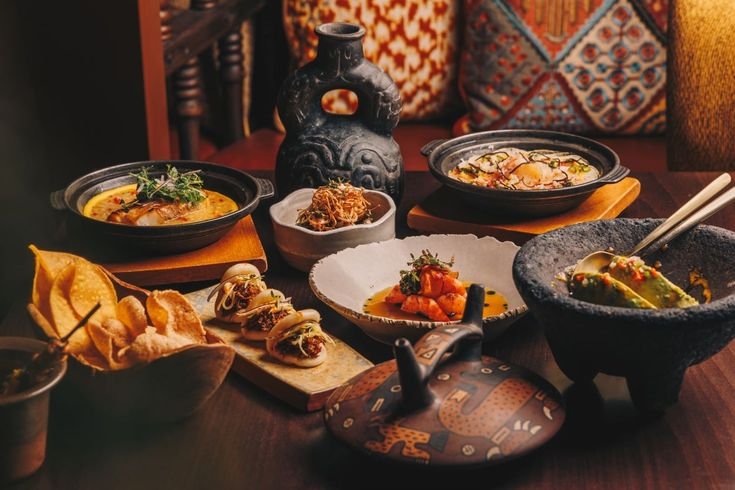Cevurı is a term that may not be widely known, but its roots go deep in certain cultures, particularly within the context of traditional practices and cuisines. The cevurı stands out for its versatility, rich history, and its continued influence in modern culinary practices. Whether it is related to the regional food, social practices, or its place in cultural traditions, cevurı holds a special place that deserves further exploration.
What is Cevurı?
The term cevurı refers to a variety of things depending on the region. The most common usage of the word “cevurı” appears within the context of Turkish and Middle Eastern culinary traditions. It refers to a cooking method or an ingredient used to prepare specific types of dishes. Historically, cevurı is part of a larger culinary language that is intertwined with the agricultural and cultural habits of different regions.
In some regions, cevurı refers to a type of dish made from slow-cooked meat, often paired with various vegetables and grains. This cooking technique is characterized by the tenderizing process, where the ingredients are allowed to cook slowly, allowing the flavors to meld together over an extended period.
Over time, cevurı has evolved into several different variations depending on the country, but it is rooted in the same fundamental techniques and values of slow cooking and blending flavors. Understanding cevurı is crucial to grasping the broader culinary traditions from which it stems.
The Origin of Cevurı
The history of cevurı can be traced back to several ancient cultures, including the agricultural societies of the Middle East. As agricultural practices grew, so did the ability to produce various meats, grains, and vegetables that were ideal for slow cooking. The method behind cevurı was born from the need to preserve food and make tough cuts of meat more tender by cooking them at low temperatures over a long period.
It is believed that cevurı was first popularized in areas where sheep and goat farming were common. These animals were raised for their meat and milk, and slow-cooked dishes were the most efficient way to ensure the meat was soft and easy to consume. Over the centuries, cevurı adapted to include local herbs, spices, and vegetables, creating regional variations that are still enjoyed today.
The method of preparing cevurı was passed down from generation to generation, and today, it is still used by families, chefs, and food enthusiasts who appreciate the depth of flavor that can only be achieved through slow cooking.
The Preparation of Cevurı
There are various ways to prepare cevurı, depending on regional traditions and personal preferences. The basic technique, however, remains consistent across different variations. It typically involves slow cooking meat, vegetables, and sometimes grains or legumes, all seasoned with a rich combination of spices.
One of the key elements of making cevurı is patience. The dish requires several hours of slow cooking to allow the flavors to develop fully. It can be cooked over a fire, in an oven, or in a traditional clay pot. The heat should be kept low to ensure that the meat becomes tender without burning or drying out. In some cases, the cooking vessel is sealed to trap moisture, ensuring that the dish remains succulent throughout the long cooking process.
In many regions, cevurı includes a variety of herbs and spices. Common seasonings include cumin, garlic, onion, cinnamon, and saffron. Each region has its unique blend of spices, which gives cevurı its distinctive flavor profiles. Whether it is spicier, earthier, or milder, these flavors play a critical role in making the dish stand out and leave a lasting impression on the palate.
Vegetables such as tomatoes, eggplants, and peppers are frequently used in cevurı dishes, as they pair well with the richness of the meat. In some regions, rice or bulgur is added to create a more filling dish, while others prefer to serve cevurı as a stew with thick broth.
Cevurı in Turkish Cuisine

In Turkish cuisine, cevurı holds a special place due to its historical roots and the enduring cultural significance of slow cooking. The Turks, known for their love of hearty and flavorful food, have long used this cooking method to prepare various meats, particularly lamb and beef. The Turkish cevurı often includes rich spices and aromatic herbs, paired with rice or flatbreads. It is a comforting and satisfying dish, often enjoyed during family gatherings or special occasions.
One popular variant of Turkish cevurı is called “etli cevurı,” where lamb or beef is slow-cooked with a variety of vegetables, such as tomatoes, carrots, and potatoes. This is a classic dish that showcases the use of slow cooking to bring out the natural flavors of the ingredients. The resulting dish is tender, flavorful, and deeply comforting.
Another variation is cevurı served in a traditional clay pot, a method known for retaining moisture and intensifying the flavors of the dish. The Turkish use of cevurı is not just about the flavors but also the experience. The communal sharing of a large pot of cevurı is a significant part of Turkish hospitality and cultural practice.
Cevurı in Middle Eastern Cuisine
The Middle East, with its rich and diverse culinary traditions, also boasts several variations of cevurı. The slow cooking method has been passed down through generations, and it plays a central role in many traditional dishes across the region. In countries like Lebanon, Syria, and Iran, cevurı is often made with lamb or chicken, cooked alongside a variety of vegetables and spices.
In Lebanon, cevurı is often served as part of a mezze platter, accompanied by other dishes like hummus, baba ganoush, and tabbouleh. The Lebanese version of cevurı may include unique ingredients like pomegranate molasses, which adds a tangy sweetness to the dish. Saffron is also a common spice used to enhance the flavors, giving the dish a rich, aromatic fragrance.
In Iran, cevurı is often prepared with rice and is known as “khoresh,” where slow-cooked meats are combined with fruits, vegetables, and spices to create a hearty, flavorful stew. Iranian cevurı might include ingredients like dried apricots or prunes, offering a sweet contrast to the savory meats and spices. The slow cooking allows the flavors to develop into a rich and complex taste, with each bite revealing a new layer of flavor.
Modern Interpretations of Cevurı
While traditional methods of preparing cevurı remain popular, modern chefs and home cooks have found new ways to incorporate this age-old cooking technique into their menus. The slow-cooked method has become a staple in many contemporary kitchens, where it is used to create dishes that offer deep, rich flavors and tender textures.
One modern take on cevurı involves using slow cookers or pressure cookers to replicate the traditional slow cooking process, cutting down the time required to prepare the dish. These appliances help retain the moisture and tenderness of the meat while infusing it with the flavors of the herbs and spices.
Chefs are also experimenting with the ingredients used in cevurı. While lamb and beef remain common choices, modern versions of the dish may include poultry, pork, or even plant-based proteins like jackfruit or tofu. These innovations allow cevurı to be enjoyed by a wider audience, including vegetarians and those with dietary restrictions.
The Cultural Significance of Cevurı
The act of preparing and sharing cevurı holds deep cultural significance in many countries. It is often seen as an expression of hospitality, with the long cooking process encouraging families and friends to gather around the table and share a meal. The communal nature of cevurı is central to the way it is enjoyed in both traditional and modern settings.
In Turkey and the Middle East, preparing cevurı is not just about the meal itself, but about fostering connection, tradition, and storytelling. The dish has been passed down through generations, with each family adding its unique touch to the recipe. Cevurı is often served during celebrations, religious holidays, and festive occasions, making it a symbol of togetherness and celebration.
Conclusion
The world of cevurı is vast, deeply rooted in tradition, and full of flavor. From its humble origins as a slow-cooked dish to its modern interpretations, cevurı has proven to be more than just a meal; it is a way of connecting with culture, history, and community. Whether prepared in the heart of a Turkish kitchen, served at a Middle Eastern feast, or enjoyed in a modern home with a slow cooker, cevurı continues to bring people together and celebrate the rich flavors of the region.
As more people seek to explore diverse culinary traditions, cevurı offers a perfect example of how food can transcend time, place, and culture. Its importance in the history and culture of the Middle East and Turkey, combined with its timeless appeal, ensures that this dish will continue to be enjoyed for generations to come.







